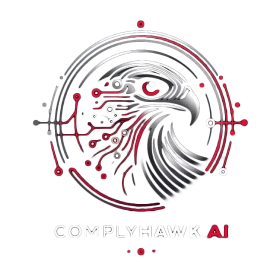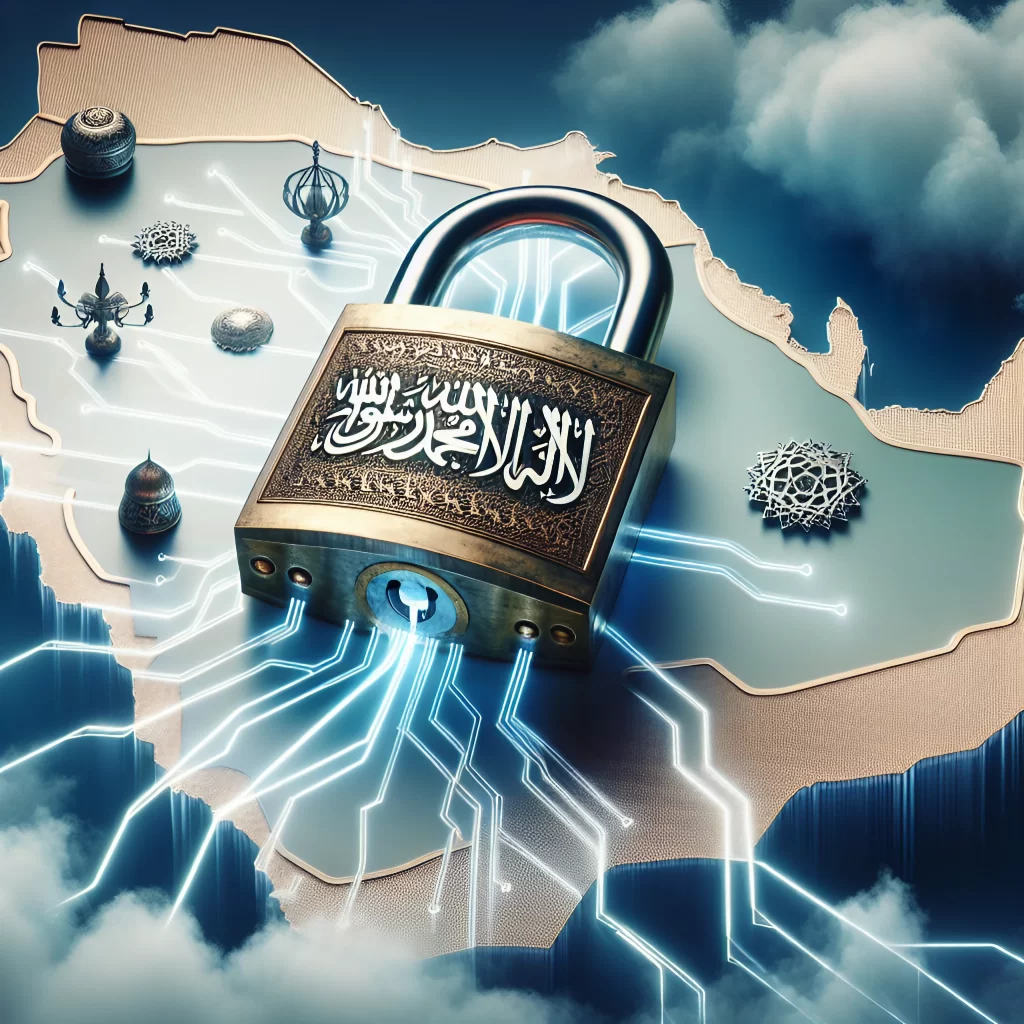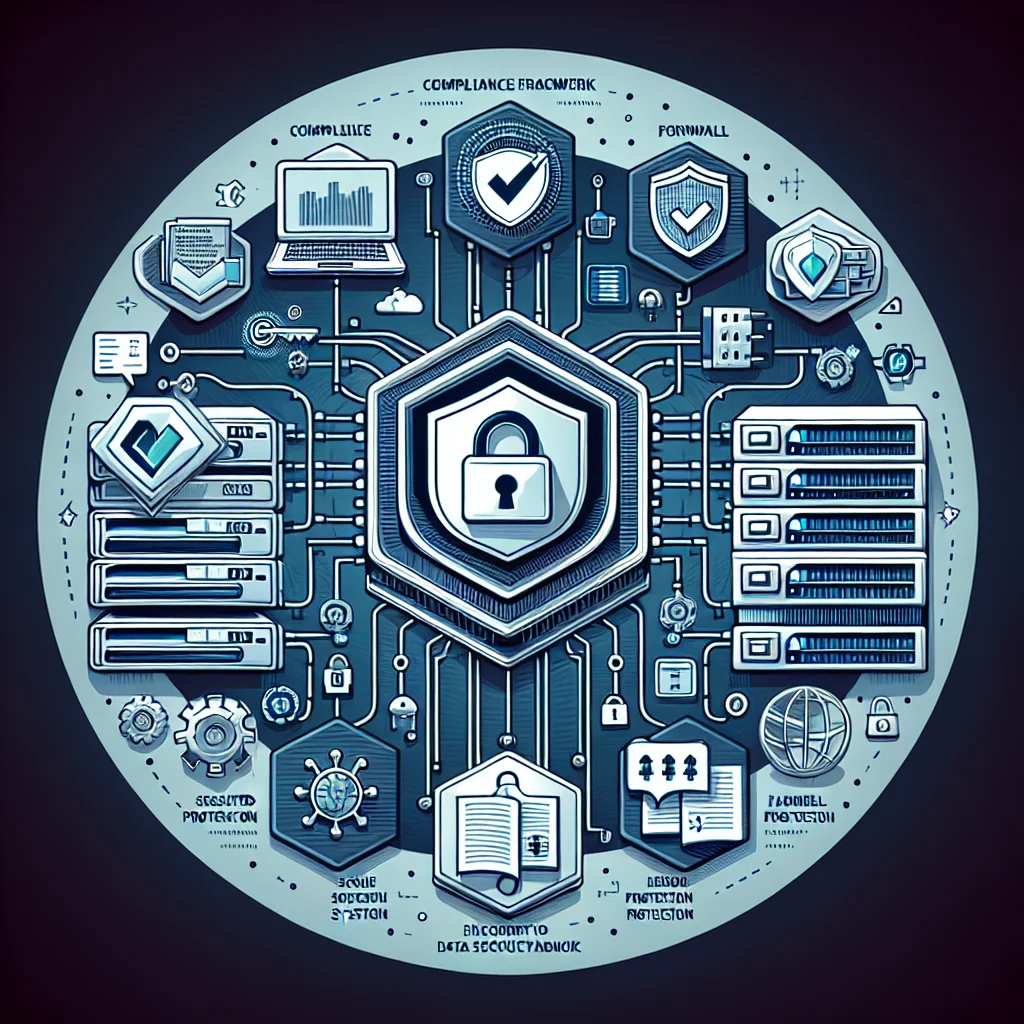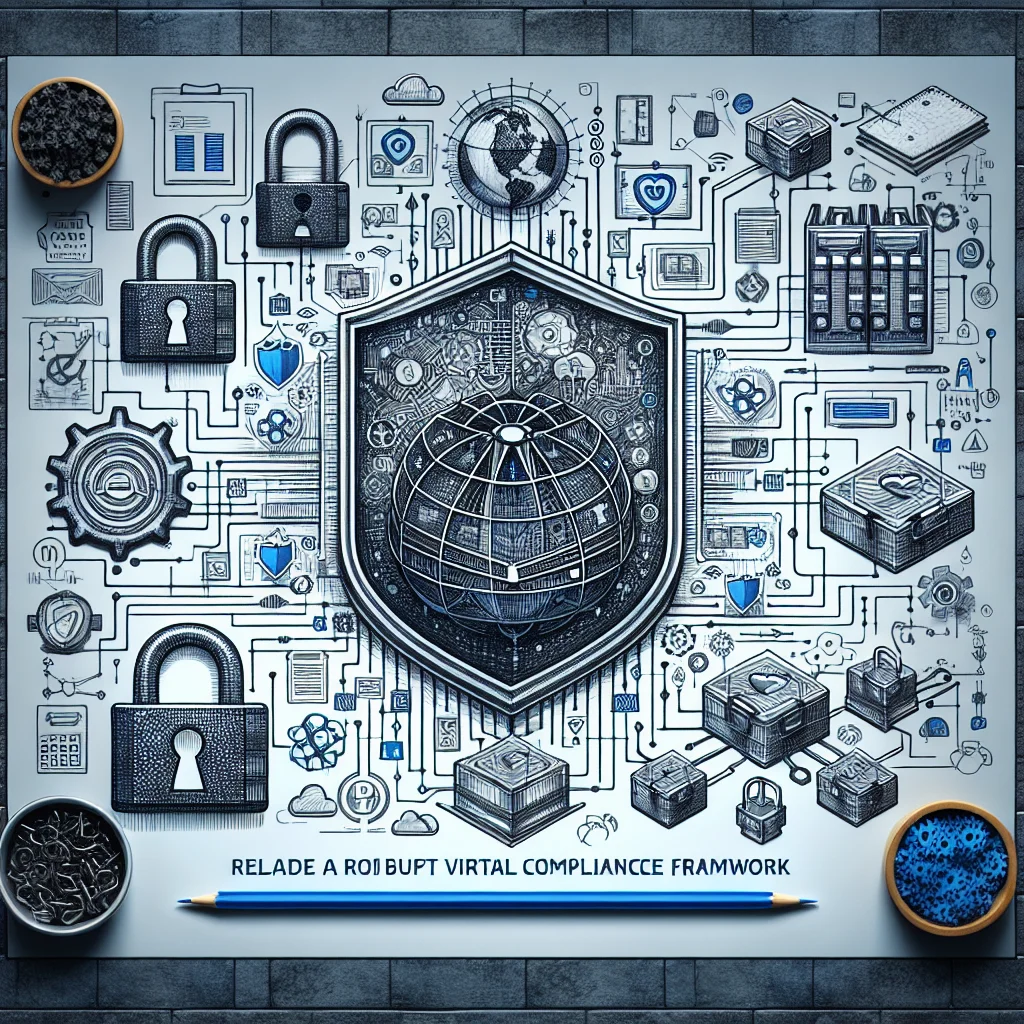Introduction
In an era where cyber threats are increasingly sophisticated and relentless, the importance of robust cybersecurity measures cannot be overstated. For CISOs and IT professionals in the Middle East, understanding and implementing the NIST 800-53 framework is crucial for safeguarding sensitive data and ensuring compliance with international standards.
The NIST 800-53 framework, developed by the National Institute of Standards and Technology (NIST), provides a comprehensive set of security and privacy controls for federal information systems and organizations.
If you’re a CISO or IT professional looking to streamline your compliance efforts and enhance your organization’s cybersecurity posture, consider partnering with an automated compliance platform such as ComplyHawk, which specializes in this framework and region.
What is NIST 800-53?
NIST 800-53 is a catalog of security and privacy controls designed to protect federal information systems and organizations. It provides a structured approach to selecting and implementing security controls based on the organization’s risk management strategy.
Who is NIST 800-53 for?
NIST 800-53 is primarily intended for federal agencies and organizations handling federal data. However, its comprehensive nature makes it applicable to a wide range of industries, including healthcare, finance, and telecommunications, especially those looking to enhance their cybersecurity measures.
Why is NIST 800-53 important?
NIST 800-53 is important because it offers a flexible and scalable approach to information security. It helps organizations identify and mitigate risks, protect sensitive data, and comply with regulatory requirements. For organizations in the Middle East, adhering to NIST 800-53 can also enhance credibility and trust among international partners.
Key Features of NIST 800-53
Comprehensive Coverage
NIST 800-53 covers a broad spectrum of security and privacy controls, addressing various aspects such as access control, incident response, and system integrity.
Customizable Controls
The framework allows organizations to tailor controls based on their unique risk profile and operational environment, ensuring a more effective and efficient security posture.
Regular Updates
NIST regularly updates the framework to address emerging threats and technological advancements, ensuring that organizations have access to the latest security practices.
Common Misconceptions About NIST 800-53
It’s Only for Federal Agencies
While NIST 800-53 was indeed developed with federal agencies in mind, its principles and controls are applicable across various industries. Many organizations outside the federal realm, including private sector companies and non-profits, have successfully adopted these guidelines to bolster their cybersecurity efforts.
Implementing NIST 800-53 is Too Complex
Many organizations fear that implementing NIST 800-53 is a daunting task due to its comprehensive nature. However, breaking down the framework into manageable parts and leveraging an automated compliance tool such as ComplyHawk can simplify the process, making it more attainable and less overwhelming, of course we are biased but our customers say it is helpful!
Compliance Equals Security
A common misconception is that simply achieving compliance with NIST 800-53 guarantees security. While compliance is essential, organizations must go beyond checklists and continuously assess and improve their security measures to adapt to the evolving threat landscape.
NIST 800-53 is a One-Time Effort
Another myth is that implementing NIST 800-53 is a one-time effort. In reality, maintaining compliance requires ongoing assessments, updates, and revisions to the controls, ensuring that they align with the organization’s risk management strategies and respond to new threats.
Frequently Asked Questions (FAQs) by CISOs
1. What are the main components of NIST 800-53?
NIST 800-53 consists of three main components:
- Control Families
- Control Baselines
- Control Enhancements
2. How does NIST 800-53 align with other frameworks?
NIST 800-53 aligns with several other frameworks, including ISO 27001 and PCI DSS. It provides a comprehensive approach that can complement and enhance existing security measures.
3. What are Control Families in NIST 800-53?
Control Families are categories of related security controls. NIST 800-53 includes 18 control families, such as Access Control, Incident Response, and System and Communications Protection.
4. What are Control Baselines?
Control Baselines are predefined sets of controls tailored to different security levels (low, moderate, high). They help organizations implement appropriate security measures based on their risk profile.
5. What are Control Enhancements?
Control Enhancements are additional measures that supplement basic controls, providing increased protection and addressing specific security requirements.
6. How do I select the right controls for my organization?
Organizations should conduct a risk assessment to determine their security needs and select controls based on their risk profile, operational environment, and regulatory requirements.
7. How often should I review and update controls?
Organizations should review and update controls regularly, at least annually or whenever significant changes occur in their operational environment or threat landscape.
8. What is the role of senior management in NIST 800-53 implementation?
Senior management is responsible for overseeing the implementation of NIST 800-53, ensuring that adequate resources are allocated, and that security controls are effectively integrated into the organization’s operations.
9. How does NIST 800-53 address privacy concerns?
NIST 800-53 includes a dedicated privacy control family that addresses various aspects of data privacy, such as consent, data minimization, and transparency.
10. What is the significance of continuous monitoring in NIST 800-53?
Continuous monitoring is crucial for maintaining the effectiveness of security controls. It involves regularly assessing the security posture, identifying vulnerabilities, and implementing corrective actions.
11. How can I ensure compliance with NIST 800-53?
Organizations can ensure compliance by conducting regular audits, implementing continuous monitoring, and leveraging automated compliance platforms like ComplyHawk.
12. What are the common challenges in implementing NIST 800-53?
Common challenges include resource constraints, lack of expertise, and difficulty in integrating controls into existing systems. Partnering with an automated compliance platform can help address these challenges.
13. How does NIST 800-53 address cloud security?
NIST 800-53 includes specific controls for cloud security, addressing various aspects such as data encryption, access control, and incident response.
14. What is the role of third-party vendors in NIST 800-53 compliance?
Organizations should ensure that third-party vendors comply with NIST 800-53 by conducting thorough assessments, establishing clear agreements, and implementing continuous monitoring.
15. How does NIST 800-53 address insider threats?
NIST 800-53 includes controls for detecting and mitigating insider threats, such as access control, user activity monitoring, and incident response.
16. What are the benefits of using an automated compliance platform?
Automated compliance platforms streamline the compliance process, reduce manual effort, and provide real-time insights into the organization’s security posture.
17. How does NIST 800-53 address incident response?
NIST 800-53 includes a dedicated control family for incident response, addressing various aspects such as detection, analysis, containment, recovery, and reporting.
18. What is the significance of documentation in NIST 800-53 compliance?
Documentation is crucial for demonstrating compliance, providing evidence of control implementation, and facilitating audits and assessments.
19. How does NIST 800-53 address supply chain security?
NIST 800-53 includes specific controls for supply chain security, addressing various aspects such as vendor assessment, risk management, and continuous monitoring.
20. How can I stay updated on changes to NIST 800-53?
Organizations can stay updated by subscribing to NIST’s mailing list, participating in industry forums, and leveraging automated compliance platforms that provide real-time updates.
21. How does NIST 800-53 address mobile device security?
NIST 800-53 includes controls for mobile device security that focus on secure access, data protection, and device management to mitigate risks associated with mobile computing.
22. What considerations should be taken into account for data classification?
Organizations should classify data based on its sensitivity and importance, which informs the selection of appropriate controls to protect data effectively throughout its lifecycle.
23. How can we integrate NIST 800-53 with existing IT frameworks?
To integrate NIST 800-53 with existing IT frameworks, organizations should map controls to their current security measures, ensuring that they complement and enhance ongoing practices.
24. What role do security awareness training and user education play?
Security awareness training and user education are critical components in the implementation of NIST 800-53, as they help to foster a culture of security and ensure employees are equipped to recognize and respond to potential threats.
25. How is risk management addressed in NIST 800-53?
NIST 800-53 emphasizes a risk management approach, guiding organizations to assess, treat, and monitor risks effectively, thereby aligning security practices with their risk tolerance and business objectives.
26. How does NIST 800-53 facilitate information sharing within organizations?
NIST 800-53 encourages the establishment of information sharing mechanisms among stakeholders to promote collaborative efforts in security, thereby enhancing overall security posture and situational awareness.
27. What strategies can be employed for effective vulnerability management?
Organizations can adopt strategies such as regular vulnerability scanning, prioritization based on risk, and implementing a patch management process to effectively address and mitigate vulnerabilities outlined in NIST 800-53.
28. How important is the cybersecurity framework in relation to NIST 800-53?
The NIST Cybersecurity Framework provides a strategic approach to managing cybersecurity risks and can be integrated with NIST 800-53 to create a comprehensive security strategy that aligns with organizational objectives.
29. What resources are available for training on NIST 800-53?
Numerous resources, including online courses, webinars, and workshops offered by organizations like NIST, educational institutions, and cybersecurity firms provide valuable training on the standards and implementation of NIST 800-53.
30. How can organizations measure the effectiveness of their security controls?
Organizations can measure the effectiveness of their security controls through regular assessments, metrics analysis, and tests of control efficacy, ensuring alignment with organizational security goals and continuous improvement practices.
Middle East-Specific Considerations
Regulatory Environment
Organizations in the Middle East should be aware of local regulations and standards, such as the UAE’s National Electronic Security Authority (NESA) standards and the Saudi Arabian Monetary Authority (SAMA) guidelines, and ensure that their NIST 800-53 implementation aligns with these requirements.
Cultural Sensitivity
When implementing NIST 800-53, organizations should consider cultural differences and ensure that security measures are communicated and enforced in a manner that respects local customs and practices.
Regional Threat Landscape
Organizations in the Middle East should be aware of region-specific cyber threats, such as state-sponsored attacks and geopolitical tensions, and ensure that their NIST 800-53 implementation addresses these risks.
Common Controls Across Frameworks
Access Control
- NIST 800-53: AC-2 (Account Management)
- ISO 27001: A.9.2 (User Access Management)
- PCI DSS: 7.1 (Limit Access to System Components)
Incident Response
- NIST 800-53: IR-4 (Incident Handling)
- ISO 27001: A.16.1 (Management of Information Security Incidents and Improvements)
- PCI DSS: 12.10 (Implement an Incident Response Plan)
Audit and Accountability
- NIST 800-53: AU-2 (Audit Events)
- ISO 27001: A.12.4 (Logging and Monitoring)
- PCI DSS: 10.2 (Implement Automated Audit Trails)
System and Communications Protection
- NIST 800-53: SC-7 (Boundary Protection)
- ISO 27001: A.13.1 (Network Security Management)
- PCI DSS: 1.1 (Establish and Maintain a Secure Network Configuration)
Conclusion
NIST 800-53 is a comprehensive and flexible framework that provides organizations with the tools they need to protect sensitive data and ensure compliance with regulatory requirements. By understanding and implementing NIST 800-53, organizations in the Middle East can enhance their cybersecurity posture, build trust with international partners, and achieve a competitive advantage.
If you’re a CISO or IT professional looking to streamline your compliance efforts and enhance your organization’s cybersecurity posture, consider partnering with an automated compliance platform such as ComplyHawk, which specializes in this framework and region.



